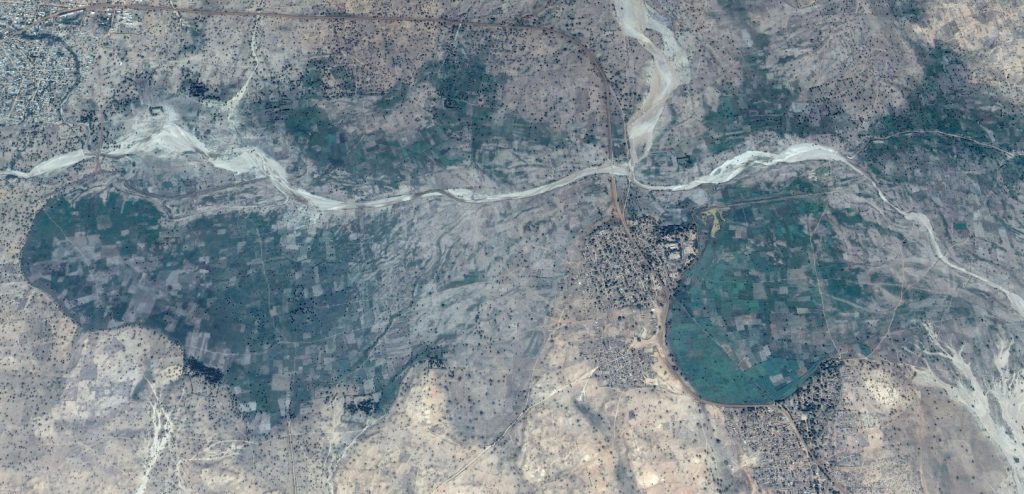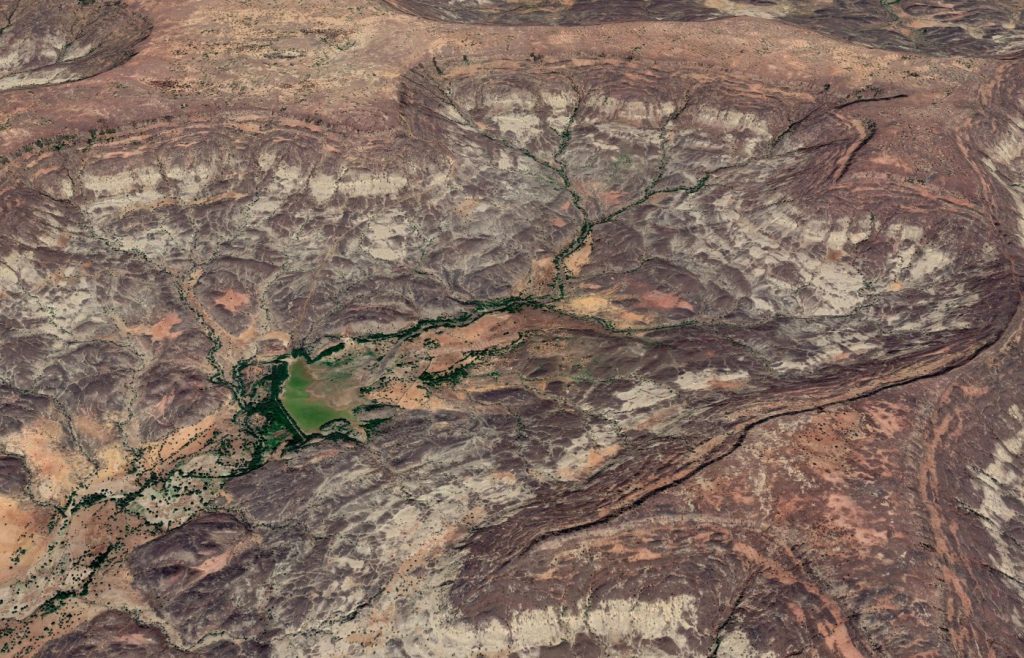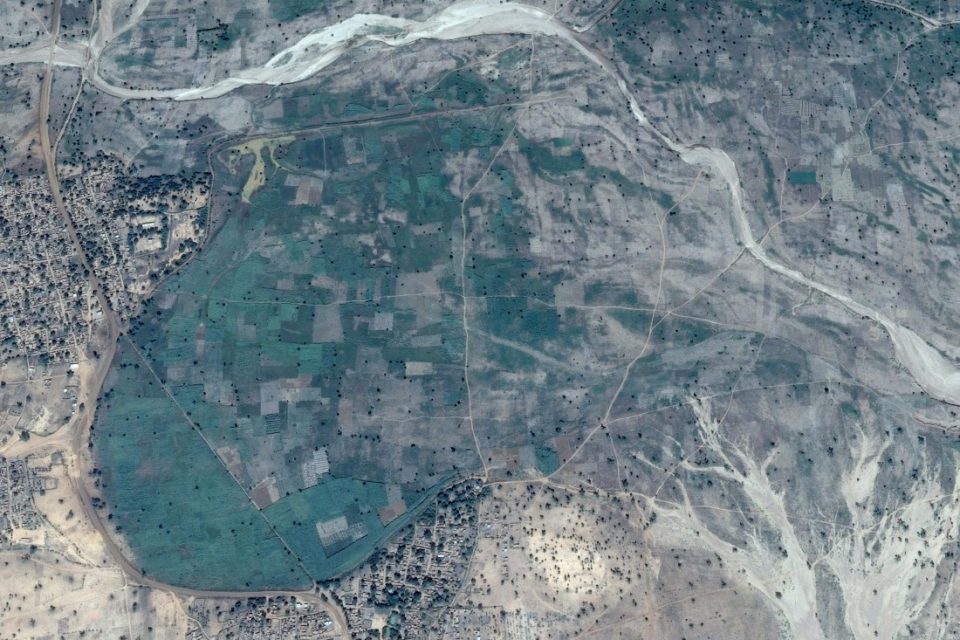A large land regeneration project was implemented by FAO in the Ader Doutchi in Niger in the 1990s. Some interventions were successful, others less so. This post will look at the long-term impacts of some small dams constructed around 1994. With some 300-400 mm of rainfall per year, the Ader Doutchi is situated in the semi-arid climate zone.
Low dikes constructed parallel to the river in the wide alluvial valley near the village of Keita have proved among the most successful interventions. Streamflow in the Ader Doutchi is very flashy and river channels are unstable because of the high sediment load. Hence it is difficult to construct permanent structures in the riverbed. There are several examples of small & medium-size dams built in the large ephemeral rivers in the region that have failed. But the approach shown in the below image (Google Earth 2020) seems to work and has passed the test of time.

The image shows two instances where there is a gradual bend in the river, which is used as the starting point of a long dike that runs effectively parallel to the channel, thus capturing flow & sediment during floods. Because of the alluvial nature of the inundated areas, water can infiltrate and is either stored as soil moisture or percolates to the underlying shallow aquifers. Some of the captured water will flow back into the river when the flood recedes. The approach has created flat and hydrated areas that provide excellent agricultural land. Each ‘horseshoe’ measures about 200 hectares.
Key to the success of the interventions is that 1) it channels water to an existing alluvial area, and 2) no obstructions are created that reduce the hydraulic capacity of the river. Thus, no efforts are made to control the flood, and most floodwater remains in the waterway—just a minor portion of the total flood volume is captured in the horseshoe.
The small earth dikes are not higher than 3 m and made of locally available material. They can easily be maintained by the beneficiary farmers. The setup has proved robust, sustainable, and popular. Moreover, the civil works involved were cheap. It is a good example of a one-off investment that have made a lasting impact.
Interventions higher up in the catchment seem less successful. The reservoir in the below image collects water from a sizeable upstream catchment that comprises mostly of ‘slopes’ with a small contribution from the laterite ‘plateau’. This image is taken by the end of November—three months after the rainy season—and the reservoir still contains some water.

What is notable, however, is the absence of much permanent vegetation in the riverbed downstream of the reservoir. Apart from a small area immediately downstream of the dam and the actual river corridor, the landscape remains mostly void of trees. The intervention has not succeeded in rehydrating and re-vegetating the downstream landscape. In the Ader Doutchi, outside the large alluvial valleys, there are no effective groundwater recharge areas and the water captured in this small upstream reservoir cannot reach the groundwater system. In addition, because the reservoir is in a remote area, its water is not used for local gardens.
Worse, the reservoir most probably attracts large herds of goats and cows—particularly in the period from January to May, when smaller watering holes are drying up and this reservoir is among the last sources of water in the area. The large concentration of animals will strip the landscape bare of all vegetation and create a very fragile landscape.
Thus, with regard to landscape restoration, this intervention cannot be classified as a success.
Note: the long dikes parallel to the river are currently maintained by the beneficiary farmers; this seems to work well. However, establishing appropriate vegetation—such as bamboo—could create a regenerative, selfsustained, and maintenance-free structure that should be very durable.
The Absence of a Beneficial Assembly
The reservoir in the upstream catchment is a stand-alone element without beneficial connections to other elements. This isolated position has reduced its value. Long-term sustainability—that is not based on periodic inflow of outside funds—requires being part of a beneficial assembly, where the ‘waste’ or output from one system element serves as input for another. In a beneficial assembly, the combined outputs are greater than the sum of the separate outputs.
No efforts have been made to connect the upstream reservoir to other elements and enhance its functionality. It is a missed opportunity.
